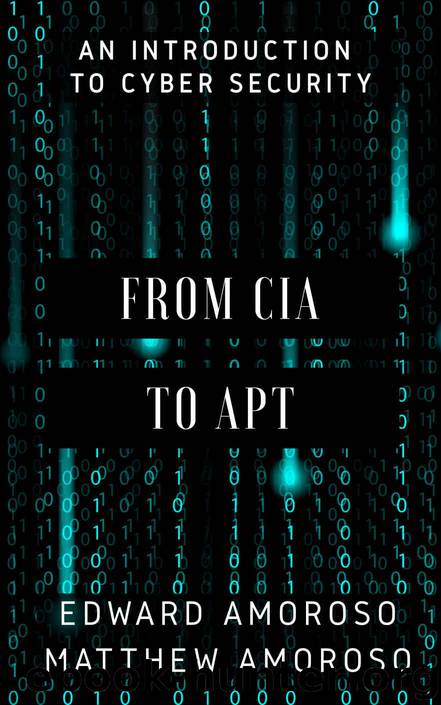From CIA to APT: An Introduction to Cyber Security by Edward G. Amoroso & Matthew E. Amoroso

Author:Edward G. Amoroso & Matthew E. Amoroso
Language: eng
Format: azw3
Published: 2017-08-10T07:00:00+00:00
Figure 14-3. Three-Step TCP Handshake Between Client Browser and Website
This so-called TCP/IP handshake provides the base communication on which most network security methods operate. The most common security method, known as a firewall, sits between clients and servers, and has the obligation to determine what should be allowed and what should be blocked. This is done based on locally defined security policies.
To summarize: The communication plumbing of the Internet is based on the TCP/IP family of protocols. It involves packets being sent between communicating entities, which implies that security protections for the Internet are likely to require integration with these steps of TCP/IP. The initial SYN packet is one of the most important factors in such security integration.
As we will see in the next chapter, policy-based decisions by special security devices called firewalls will depend on many different factors, but one of the most important of these factors is the simple ACK bit in the TCP handshake. That simple bit turns out to play a powerful role in protecting Internet resources from being accessed by unauthorized individuals.
Download
This site does not store any files on its server. We only index and link to content provided by other sites. Please contact the content providers to delete copyright contents if any and email us, we'll remove relevant links or contents immediately.
Effective Threat Investigation for SOC Analysts by Yahia Mostafa;(3219)
Mastering Azure Security by Mustafa Toroman and Tom Janetscheck(3085)
Future Crimes by Marc Goodman(3065)
Mastering Python for Networking and Security by José Manuel Ortega(3059)
Blockchain Basics by Daniel Drescher(2964)
Machine Learning Security Principles by John Paul Mueller(2946)
Practical Memory Forensics by Svetlana Ostrovskaya & Oleg Skulkin(2932)
Operationalizing Threat Intelligence by Joseph Opacki Kyle Wilhoit(2625)
Attacking and Exploiting Modern Web Applications by Simone Onofri & Donato Onofri(2621)
Operationalizing Threat Intelligence by Kyle Wilhoit & Joseph Opacki(2620)
Mastering Bitcoin: Programming the Open Blockchain by Andreas M. Antonopoulos(2582)
From CIA to APT: An Introduction to Cyber Security by Edward G. Amoroso & Matthew E. Amoroso(2540)
The Art Of Deception by Kevin Mitnick(2355)
The Code Book by Simon Singh(2303)
Solidity Programming Essentials by Ritesh Modi(2269)
Incident Response with Threat Intelligence by Roberto Martínez(2145)
Hands-On AWS Penetration Testing with Kali Linux by Benjamin Caudill & Karl Gilbert(1977)
Wireless Hacking 101 by Karina Astudillo(1910)
Microsoft 365 Security, Compliance, and Identity Administration by Peter Rising(1903)
